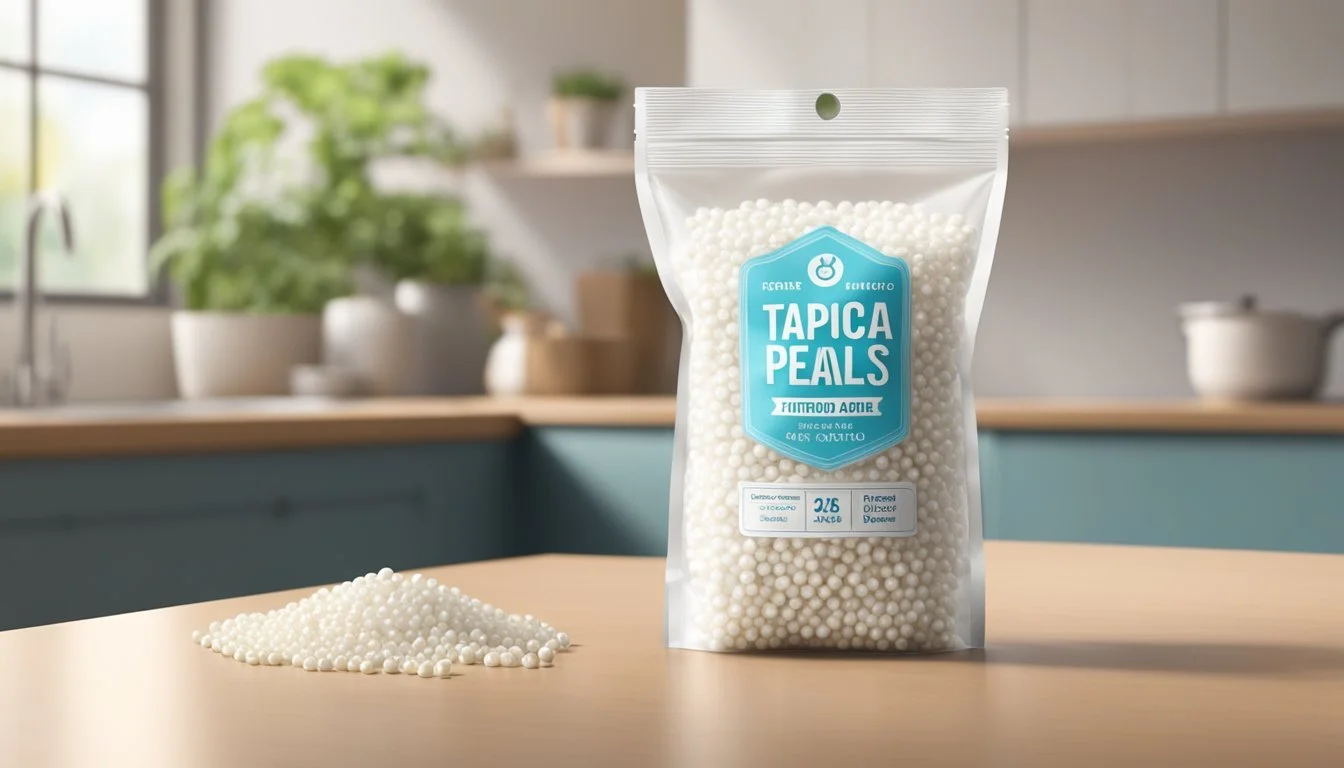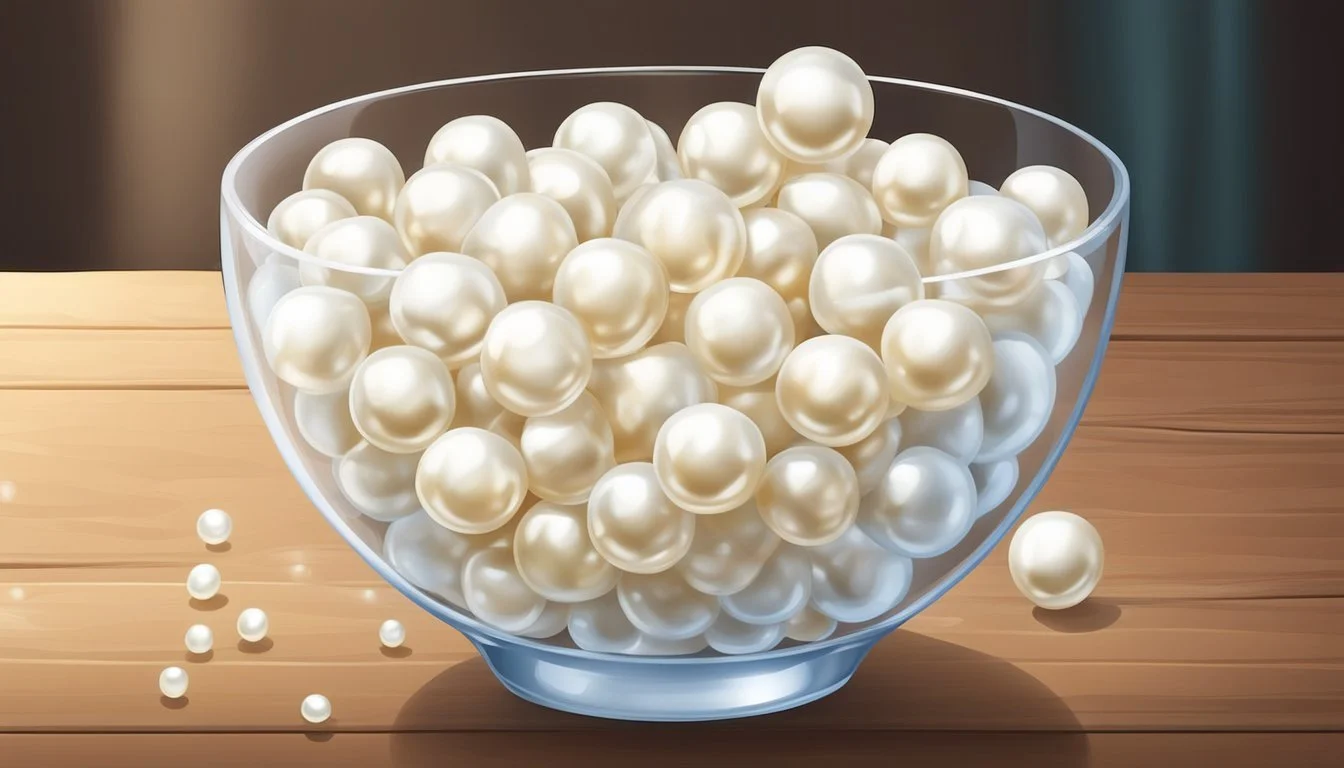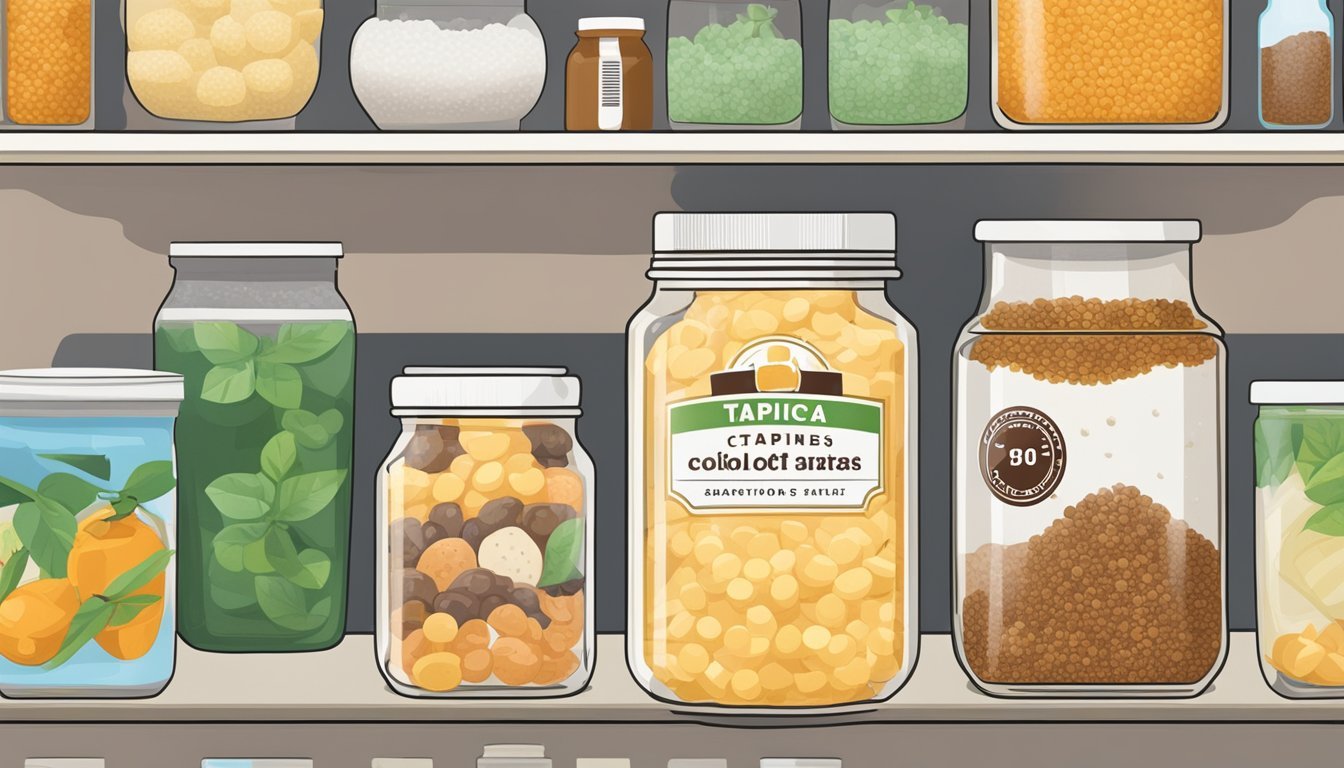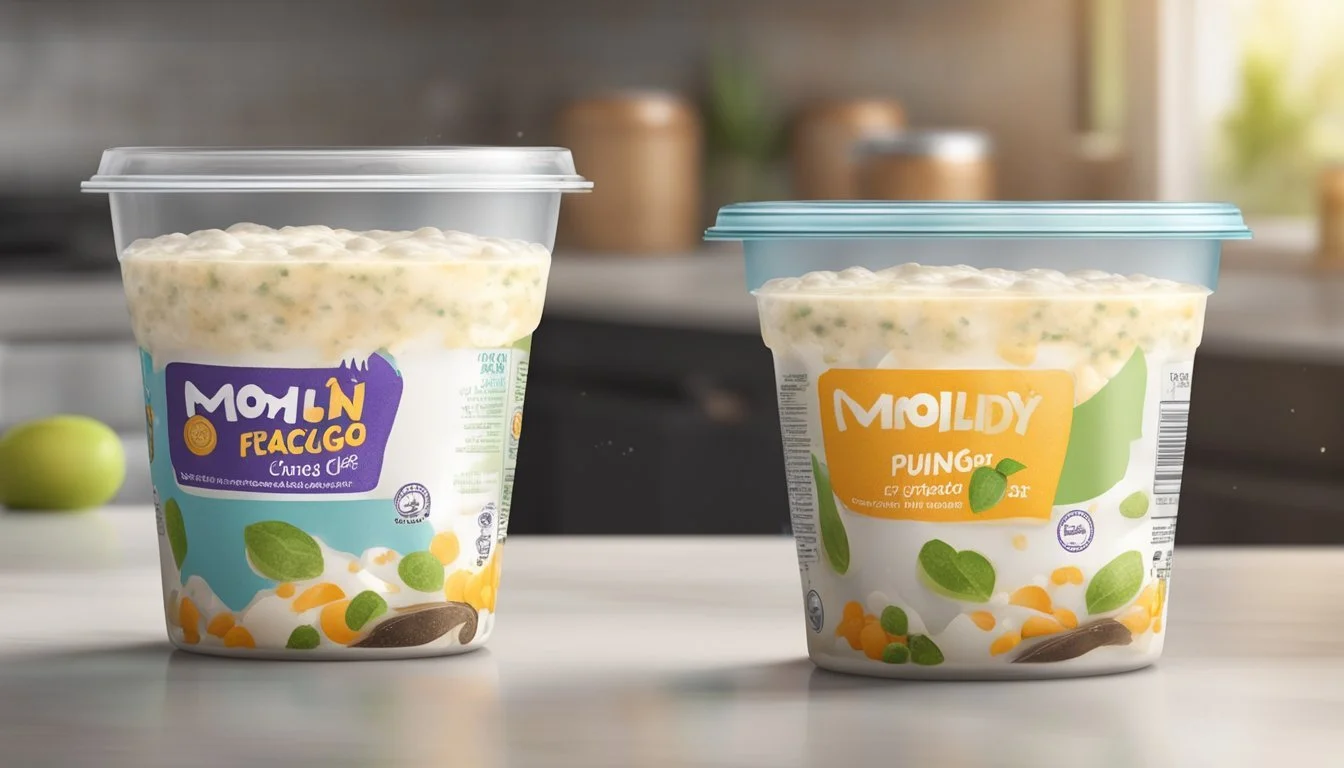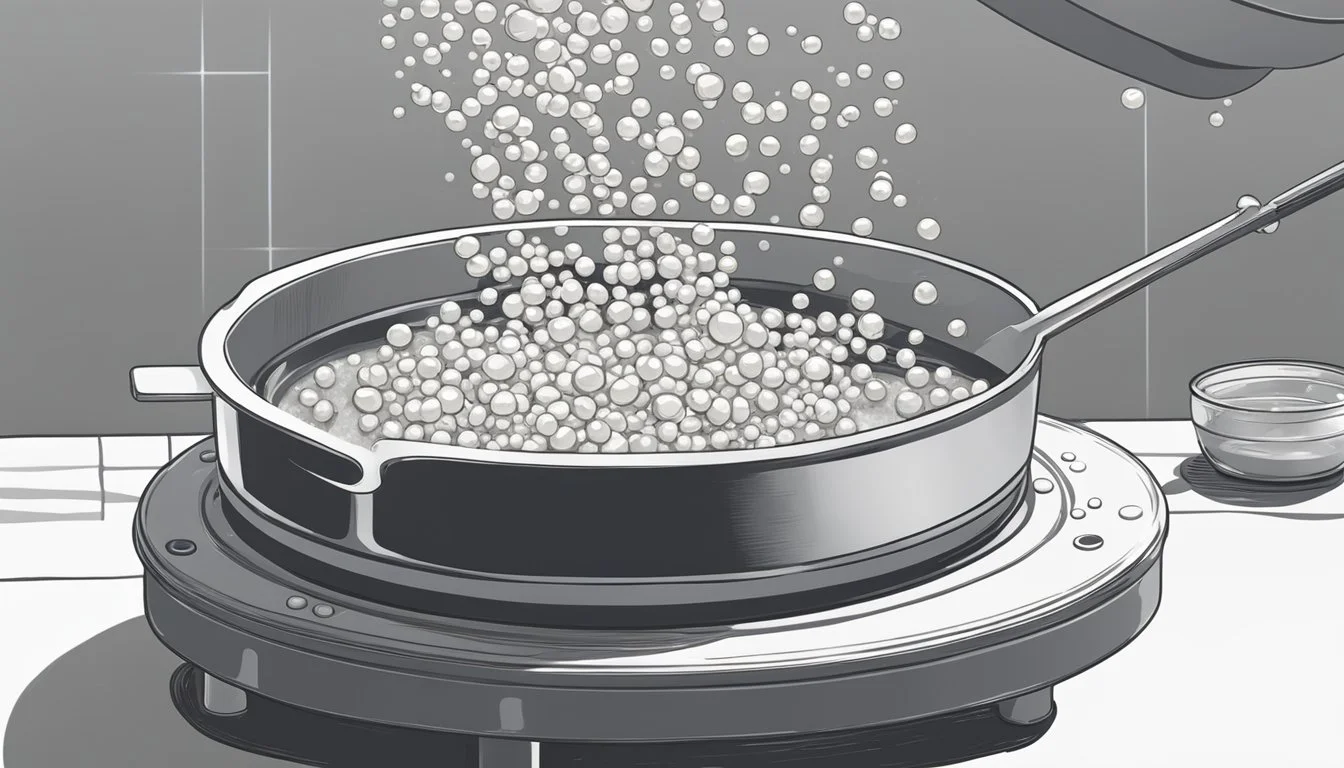Does Tapioca Go Bad?
Shelf Life and Spoilage Signs
Tapioca, a starch extracted from cassava root, is a common ingredient found in a variety of culinary applications, ranging from puddings and boba tea to gluten-free baking. Given its widespread use, a question often arises regarding the shelf life and storage of this carbohydrate-rich food product. Understanding the properties and spoilage signs of tapioca can ensure that it retains its desired quality and remains safe for consumption.
Under optimal conditions, tapioca can be quite shelf-stable. However, like many food items, it is not impervious to degradation. The longevity of tapioca depends significantly on its form—whether as pearls, flour, or flakes—and on the conditions under which it is stored. To maintain its quality, tapioca should be kept in a cool, dry place, shielded from moisture and heat which can lead to spoilage.
Indicators of spoilage in tapioca include off odors, discoloration, and the presence of mold. With proper storage, uncooked tapioca pearls can remain fresh for six to twelve months, while tapioca flour should be stored between 50°F and 70°F with low humidity to prevent spoilage. Any deviations from quality should prompt users to discard the product to prevent any potential health risks associated with consuming spoiled food items.
What is Tapioca?
Tapioca is a starchy product that plays a vibrant role in global cuisine, known for its versatility in cooking and as a gluten-free alternative to other flours.
Origins and Source
Tapioca is derived from the cassava root, a staple tuber originally found in South America, but now cultivated worldwide. The plant, known scientifically as Manihot esculenta, provides a significant source of carbohydrates to many cultures, particularly in Africa and Asia.
Tapioca in Various Forms
There are multiple forms in which tapioca is available:
Tapioca pearls: These small, chewy balls are often used in puddings and beverages like bubble tea.
Tapioca flour or starch: This fine, white powder is a common thickening agent in soups and sauces, appreciated for its neutral flavor and quick thickening power. It is also used in baking, especially for those requiring a gluten-free option.
Cassava flour: Made from the whole cassava root, this flour retains more fiber than tapioca flour or starch.
Nutritional Profile
While tapioca is predominantly made up of carbohydrates, it has minimal amounts of protein and virtually no fat. Here is a basic breakdown:
Nutrient Content in Tapioca Carbohydrates High Protein Low Fat None
As a food product, tapioca has a neutral flavor, which makes it an adaptable ingredient in diverse culinary applications, but it is not notably nutritious on its own.
Storage Insights
Proper storage methods extend the freshness of tapioca and prevent spoilage. Understanding how temperature, light, and air affect tapioca will lead to optimal storage conditions.
Ideal Storage Conditions
Tapioca thrives in a cool, dry place away from direct light and varying temperatures. A pantry or cupboard usually offers these conditions, making it a preferred storage location. Consistent temperature is key; therefore, areas that fluctuate, like near ovens or windows, should be avoided.
Packaging and Containers
Storing tapioca in airtight containers is crucial to prevent exposure to air and moisture, which can degrade the quality. Whether it's pearls or flour, sealing it prevents hardening and microbial growth. For tapioca that comes in packaging not meant for long-term storage, transferring it to a sealable container after opening is a wise choice.
Recommended Containers:
Glass jars with tight seals
Plastic containers with snap-on lids
Always label the container with the date of storage to keep track of freshness.
Shelf Life and Best-By Dates
Uncooked tapioca pearls typically have a shelf life of 6 to 12 months when stored properly in a pantry. This can extend up to two years if the conditions are ideal.
Shelf Life Overview:
Original packaging: 6-9 months
Airtight container in pantry: up to 2 years
Cooked tapioca pearls: 4-5 days in the refrigerator
It's important to note the best-by dates on packaging, as they provide a guideline for consumption while the product is at its peak quality. After this date, the quality may diminish, so regular checks for signs of spoilage such as an off odor or discoloration are recommended.
Signs of Spoilage
When assessing the condition of tapioca, one can identify spoilage through various signs. These indicators commonly present themselves visually, through smell, or by a change in texture.
Visual Indicators
The presence of mold is a primary visual cue that tapioca has gone bad. One should look for any discoloration or spots that are not part of the natural coloration of tapioca. While natural tapioca can vary in color, stark contrasts, particularly white, green, or black specks, might indicate mold growth.
Olfactory Signs
Spoiled tapioca often emits an unpleasant odor. Fresh tapioca should not have a strong smell, and any rancid, sour, or otherwise off-putting odors are signs of spoilage. The absence of a normal, mild aroma or the presence of a distinctly unpleasant odor suggests that the tapioca is no longer at peak quality.
Texture Changes
Fresh tapioca should feel consistent in its texture. If the tapioca has developed a hardened texture, or if it feels slimy or sticky, these are indicators that the quality has deteriorated. Clumping without the presence of moisture is also a sign that the tapioca is no longer fresh. Check for these texture changes, especially in tapioca pearls, which should be relatively smooth and have a consistent chewy quality when fresh.
Food Safety Considerations
Tapioca, derived from cassava root, can become unsafe to eat if it spoils. It is essential to recognize the risks associated with spoiled tapioca, adhere to best practices for safe handling, and understand the inherent dangers of cassava to prevent foodborne illnesses.
Risks of Consuming Spoiled Tapioca
Spoiled tapioca poses health risks as it can harbor foodborne pathogens that lead to illness. The presence of mold, discoloration, and off odors are clear indicators that tapioca is no longer safe to consume. Consuming tapioca that has gone bad may result in symptoms ranging from mild digestive discomfort to severe food poisoning.
Best Practices to Prevent Contamination
To ensure safety and prevent contamination, one should:
Store tapioca in an airtight container to prevent cross-contamination.
Keep tapioca in a cool, dry place away from heat sources to maintain its quality.
Inspect tapioca for spoilage signs, such as a musty smell or unusual discoloration, before use.
Understanding the Dangers of Cassava
Cassava contains naturally occurring toxins, specifically compounds that can convert to cyanide. Proper processing and preparation of tapioca products reduce these toxins to safe levels, making the products safe to eat. However, consuming incorrectly processed cassava products can cause health risks, including cyanide poisoning, which can be fatal in severe cases. It is crucial to source tapioca from reputable suppliers who adhere to safe processing standards to mitigate these risks.
Preparing and Using Tapioca
When preparing and using tapioca, understanding the proper methods of cooking and incorporating it into recipes ensures the best texture and flavor in your dishes.
Cooking with Tapioca
Tapioca pearls, often used in bubble tea, require careful cooking to maintain their famed chewiness. They should be boiled in water for about 20-30 minutes and then rinsed under cold water. It is crucial to keep an eye on the heat as constant, moderate heat helps them cook evenly without becoming too mushy or sticky.
For tapioca flour, this gluten-free alternative is ideal for those with gluten sensitivities. The flour must be sifted before use to eliminate any clumps, ensuring a smooth consistency in your culinary creations. The cooking temperature varies based on the recipe; however, lower temperatures are often recommended when baking to prevent the flour from burning or altering the taste.
Tapioca in Recipes
Tapioca can be a versatile ingredient across a range of recipes. It serves as a thickening agent in sauces, soups, and gravies. To use it effectively:
Sauces & Soups: Combine 1-2 tablespoons of tapioca flour with a cold liquid to create a slurry before adding it to your dish to prevent clumping.
Baking: Tapioca flour can replace traditional flour in a 1:1 ratio, offering a gluten-free solution for breads and pastries.
Furthermore, tapioca pearls add a delightful texture to smoothies and desserts. They're an essential component of boba or bubble tea, where they bring a playful chewiness to the drink. When using them in recipes, it's important to soak or cook the pearls as directed before adding them to ensure they are fully hydrated and tender.
Tapioca Alternatives
When looking for alternatives to tapioca, one should consider how different starches can vary in texture, flavor, and nutritional content. These alternatives can be essential for those seeking gluten-free options or a different thickening agent in their cooking and baking.
Comparing Tapioca with Other Starches
Tapioca is a starch extracted from the cassava root. It's known for its neutral flavor, smooth texture, and as a thickener in cooking and baking. However, it's not the only option available:
Cornstarch: A common thickener that provides a sheer, glossy finish to sauces and fillings. Cornstarch is gluten-free, and its thickening power is twice that of flour, which means one typically needs half as much cornstarch as one would tapioca.
All-Purpose Flour: While not gluten-free, flour is a traditional thickener. It's derived from wheat and has a more noticeable flavor and heavier consistency. In recipes calling for tapioca, one can usually substitute an equal amount of flour.
Coconut Flour: A gluten-free and grain-free alternative with a distinct coconut flavor. It's very absorbent, so less coconut flour is needed compared to tapioca. Coconut flour is particularly popular in paleo diets.
Potato Starch: It shares certain qualities with tapioca, including its gluten-free status and capacity to create a light texture in baked goods. One can typically use the same amount of potato starch as tapioca in recipes.
When substituting these alternatives, consider their distinct properties, like flavor, texture, and whether or not they contain gluten. This will help ensure that the substitute not only performs the same function in a recipe but also that it suits dietary needs and taste preferences.
Proper Handling of Tapioca
Proper storage and handling are crucial for preserving the quality of tapioca. Minimizing exposure to elements like air, humidity, and light can significantly prolong its shelf life and maintain its textural integrity.
Measures for Preventing Spoilage
To prevent spoilage of tapioca, professional chefs and food storage experts recommend placing the product in airtight containers to reduce the risk of humidity and air exposure. The following table illustrates the storage measures that should be taken to safeguard the quality of tapioca:
Storage Method Environment Expected Outcome Airtight Container Pantry/ Dry Place Reduces moisture and air contact, preserving quality. Refrigeration Refrigerator Extends freshness, advisable for hydrated or prepared tapioca. Freezing (if applicable) Freezer Suited for extended storage of large batches or premixed items like tapioca pudding.
Light can also play a detrimental role in the deterioration of tapioca products; hence they should be stored in a dark environment. Tapioca should not be stored near sources of heat, as heat can accelerate the deterioration process.
Extending Tapioca's Usable Life
To extend the usable life of tapioca, one must consider the specific type of tapioca. For dry tapioca, such as pearls or flakes, storage in a cool, dry environment away from direct sunlight is key. When dealing with dehydrated or pre-processed forms like tapioca flour, these should also be kept in a tightly sealed container to maintain a low humidity environment.
For prepared tapioca that includes ingredients like milk or sugar, which are perishable, refrigeration is essential. In the refrigerator, prepared tapioca dishes can last for a few days, extending their usable life compared to room temperature storage. Freezing such preparations could further extend their life, but it's important to note the potential changes in texture upon thawing.
Following these guidelines will help to maintain the consistent quality and safety of tapioca in both professional kitchens and home storage situations.
Conclusion: Ensuring Tapioca Quality
To maintain tapioca quality, proper storage is crucial. Tapioca, in its various forms, should be stored in an airtight container to preserve freshness and nutritional value. This prevents moisture and pests from affecting the texture and quality of the tapioca.
For tapioca pearls, known for their desirable chewy texture, keeping them in a cool, dry place is essential. Flakes, grains, and sticks should also be stored similarly to prevent loss of chewiness. Regarding tapioca flour, it retains its quality best when stored away from direct sunlight in a dark pantry or cupboard.
Tapioca Form Ideal Storage Condition Quality Indicator Pearls Airtight container, cool and dry Chewiness Flour Cool, dry place, away from direct sunlight Absence of off odors or colors Flakes/Grains Airtight, low humidity environment Texture, no moisture
The shelf life of uncooked tapioca generally ranges from six to twelve months. However, checking for signs of spoilage like mold, discoloration, or an off odor is necessary before use. The quality of tapioca determines the outcome in recipes, such as achieving a perfect pudding consistency.
In preserving tapioca's nutritional value, consider that exposure to high temperatures and humidity can impact not just the taste and texture but also the nutritional aspects. Therefore, storage plays a role in maintaining the nutrition of tapioca-based products. Ensure these guidelines are followed to enjoy high-quality tapioca in your cooking and baking endeavors.

